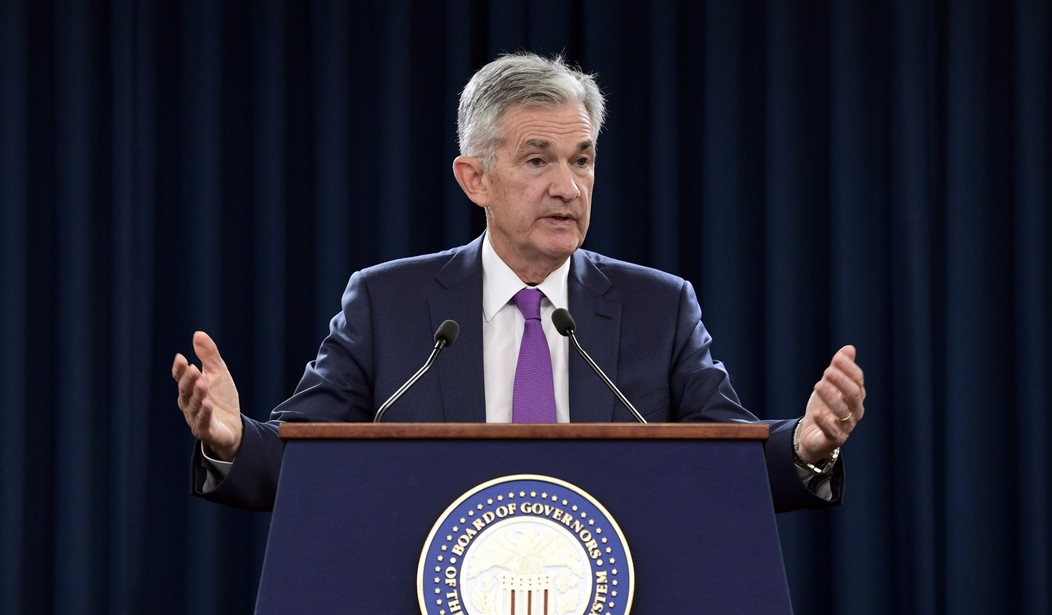The opinions expressed in guest op-eds are those of the writer and do not necessarily represent the views of RedState.com.
The United States has entered a new era of stagflation eerily reminiscent of the economic pain of the late 1970s. The stagflation of the 1970s was followed by a soft landing and a “Great Moderation” in macroeconomic policy. Unfortunately, the current stagflation is likely to end in the most predictable economic crisis in U.S. history. The World Bank reports that a global recession is imminent. Sluggish economic growth combined with high inflation has taken a toll on the world economy, especially in developing countries. These countries have incurred large amounts of debt in response to the COVID-19 pandemic and are now experiencing a wave of defaults and debt restructurings.
The United States achieved a soft landing in the 1980s and 1990s because officials enacted new monetary and fiscal rules to stabilize prices and balance the federal budget. Under Fed Chairmen Volcker and Greenspan, rules-based monetary policies reduced high prices. In Congress, new statutory fiscal rules enabled the government to balance the budget and stabilize the debt as a share of national income. These policies were accompanied by high rates of economic growth and greater economic stability compared to the 1970s. In the late 1990s, the federal government actually incurred surplus revenue for a few years. Fed Chairman Greenspan suggested that the surplus revenue be used to pay down the national debt, but his proposal was never pursued in Congress.
In the United States, the looming economic crisis is the result of debt fatigue as the nation has allowed debt to grow more rapidly than national income for half a century, and in coming decades federal debt is projected to grow to more than double the national income. When unfunded liabilities in entitlement programs are included, the numbers are staggering. Nouriel Rubini estimates U.S. total liabilities including unfunded liabilities, as a share of national income at 420 percent, higher than during the Great Depression and after World War II.
Over the past two decades, prudent monetary and fiscal rules have been abandoned, allowing debt to increase at an unsustainable rate. In this era, Fed officials have abandoned the prudent monetary policies pursued by their predecessors, driving interest rates on public debt to near zero. Quantitative easing, in which the Fed purchases U.S. securities, has allowed the federal government to finance virtually all the increase in discretionary spending by borrowing. Until this year, lower interest rates on U.S. securities allowed Congress to increase borrowing without a significant increase in the interest cost of borrowing.
This year, the inflation genie is out of the bottle, and these chickens have come home to roost. With inflation rates not seen since the 1970s, interest rates have increased sharply. Interest costs on the ever-growing national debt are now the most rapidly growing component of federal spending.
We should not expect a soft landing in this new era of stagflation. Congress continues to enact larger budgets, with increased spending financed by borrowing. The Fed has responded to higher inflation by increasing the discount rate and slowing the purchase of U.S. securities, but Fed Chairman Powell is already signaling that monetary easing may be required to offset economic contraction. These are the failed macroeconomic policies that created the debt crisis in the first place.
The current stagflation is likely to end not in a soft landing, but rather in an unprecedented debt crisis. Foreign creditors are already signaling less willingness to hold U.S. debt. With increased competition from China and other countries, the use of the dollar as the world reserve currency is declining. The United States is now at risk of a debt default, and when that risk reaches a critical level, we should expect a discontinuous increase in interest rates that will make public debt even less sustainable.
The only time that the United States faced a debt crisis of this magnitude was in the early national period. The Founders responded to that debt crisis by creating a sinking fund with revenue to pay down the debt. Federal expenditures were brought into line with revenues, and any surplus revenue was used to pay down debt. Within decades, the debt was reduced and eliminated. Where is Washington, Jefferson, Madison, and Hamilton when we need them?
Barry W. Poulson ([email protected]) is a policy advisor with The Heartland Institute.














Join the conversation as a VIP Member